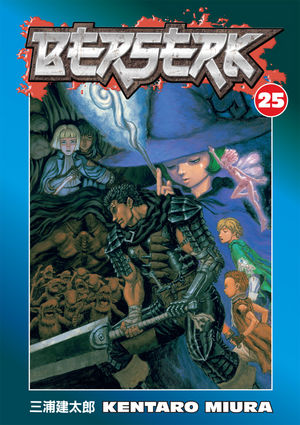
Berserk 25 puts the newly empowered group that has gathered around Guts with their new items against trolls.
These trolls are not like standard trolls we see in games like Dungeons and Dragons. For one, they are short. Perhaps as tall as a teen. But they're bulky, like dwarves. And fur covered. And... and... and...
In short, nothing like standard Dungeons and Dragons trolls.
There is also an ogre. Once again, nothing like the standard Dungeons and Dragons ogre. Not a big hairy stupid looking man, but a monstrous entity whose bone proportions are way off and whose head is completely inhuman in it's shape and use.
If you're using a home brew setting, you can do stuff like this all the time. You can customize the world to your characters and setting. If you're running the standard rules though, make sure to inform the players that you've made a lot of changes to the campaign setting and not to expect the same old thing. That you, as the Game Master, will tell them what their players know of opposition meet.
This can be useful in that it cuts down the players who already know everything from playing the game for years, if not decades. However, as useful as it is to the Game Master to leverage surprise and newness among the group, it can be frustrating for those who've spent years gathering this lore to have it suddenly rendered useless. Try to gauge how the party members are reacting to the world.
Readers also learn a bit about the cosmology of the setting. Like the dreaded real world, the mainland church here has managed to incorporate many bits of older religions into itself. Doing so has essentially muted those old names and powers and requires efforts to gather those resources back. Divine lords of the elements become archangles for example. Churchs are built atop old religious sites in order to deny them to the 'pagans'. This shows a richness of history that runs parallel to the real world and showcases how events in the real world can be mirrored in your fantasy setting.
One of the things that 4e brought a little more back into focus is how the Fey Realms overlap the world. What if they're not the only ones? In this volume, with Casca and Farnese both captured by trolls, the party has to search for them. During that time, as they descend into caves, the caves become stranger and stranger and the insects and animals that might be found in such a spot more and more bizzare. Turns out that due to the event of Griffith coming back, the barriers between worlds are thin and all it takes is a wrong turn to end up in a place like Qliphoth.
This is "The Astral World's Region of Darkness." The spellcaster here notes that ethereal bodies tend to gravitate toward ods of the same nature. In essence, like attracks like. It makes a lot of sense in most Dungeons and Dragons settings too as that's usually what happens in the different planes.
It's hard to describe the bizzar nature of Qliphoth and it's inhabitants as visualized here. This is another huge benefit to Berserk being in a manga form. The artists, Kentaro Miura, is top notch. In the old western comics, I'd compare his style to George Perez. Seeing the weirdness that pours of of Kentaro's mind on paper makes it a lot easier to describe to your players by simply using the old copy machine for personal use.
Finally, the book ends off on a cliff hanger. This is a good reminder that the end of a campaign session should accomplish something in and of itself. For example, at the end of a massive battle where everyone is tired and weary, having the characters safety reach home is one option. For another, having the party be out on the road and have an encounter and ending it there? That's another option.





No comments:
Post a Comment